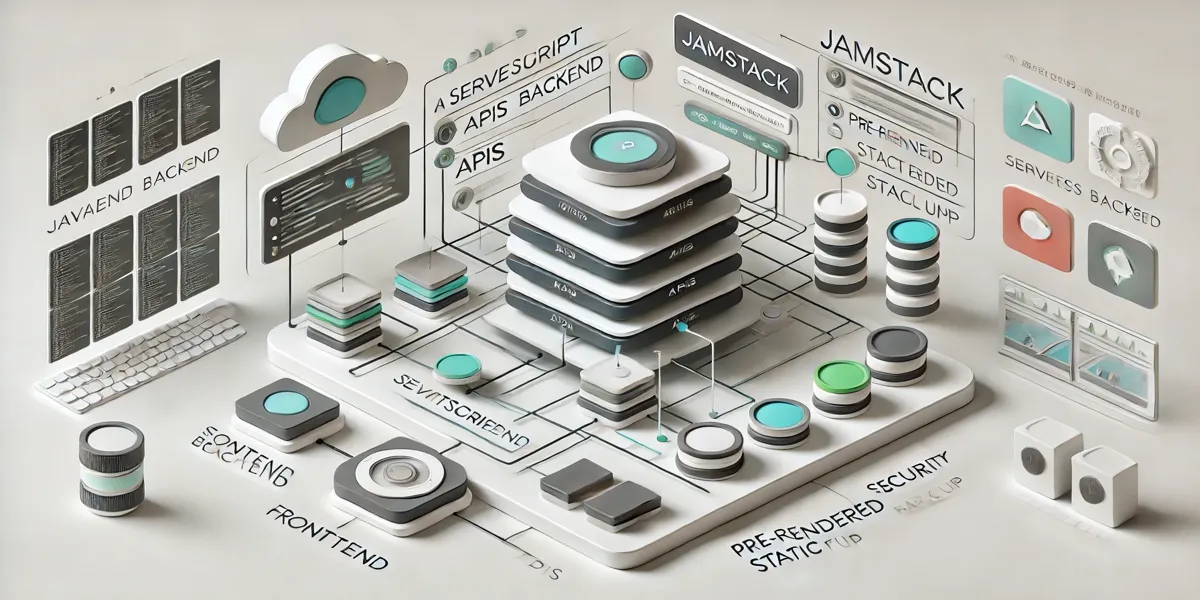In recent years, JAMstack (JavaScript, APIs, and Markup) has emerged as a revolutionary approach to web development. Unlike traditional server-side architectures, JAMstack emphasizes a decoupled, client-side approach that leverages modern web technologies to create highly performant, secure, and scalable websites and applications. In this blog post, we will explore the core benefits of JAMstack architecture and why it is rapidly gaining popularity among developers.
What is JAMstack?
JAMstack stands for JavaScript, APIs, and Markup. This architecture focuses on separating the frontend from the backend, where the frontend is built using static site generators and client-side JavaScript, and the backend services are accessed via APIs.
By decoupling these components, JAMstack enhances flexibility and scalability while reducing the complexity of web development.
1. Improved Performance
One of the standout advantages of JAMstack is its exceptional performance. Websites built with JAMstack are pre-rendered and served from a Content Delivery Network (CDN). This approach reduces server response times and latency, leading to faster load times. Since static files are served directly from the CDN, users experience quicker page loads, which can significantly enhance user satisfaction and engagement.
Additionally, the use of static site generators ensures that the HTML is generated at build time, rather than on each request. This eliminates the need for time-consuming server-side processing and database queries, further boosting performance.
2. Enhanced Security
Security is a critical concern for web applications, and JAMstack addresses many of these concerns by reducing the attack surface. Traditional server-side architectures often involve complex server configurations, databases, and dynamic content generation, which can be vulnerable to attacks. In contrast, JAMstack applications rely on static files served via a CDN, minimizing the exposure of sensitive server infrastructure.
By removing server-side logic and database interactions from the frontend, JAMstack reduces the potential for security breaches. Furthermore, APIs used in JAMstack applications are typically secured through authentication and authorization mechanisms, adding an additional layer of protection.
3. Scalability
Scalability is another key benefit of JAMstack architecture. The reliance on CDNs for content delivery allows JAMstack websites to handle varying levels of traffic efficiently. As traffic increases, the CDN automatically distributes the load, ensuring that performance remains consistent even during high traffic periods.
This scalability is especially beneficial for businesses that experience unpredictable traffic spikes or rapid growth. The ability to serve content globally from distributed CDN nodes also ensures that users receive a consistent experience regardless of their geographical location.
4. Developer Experience
JAMstack offers a modern development experience that is both streamlined and efficient. Developers can work with a wide range of static site generators, headless CMS, and modern JavaScript frameworks to build their applications. This flexibility allows for faster development cycles and easier integration with existing tools and workflows.
The decoupled nature of JAMstack also promotes a clean separation of concerns, making it easier to manage and maintain codebases. Developers can focus on building the frontend and integrating with APIs, without worrying about server-side code or database management. This results in a more enjoyable and productive development process.
5. Cost Efficiency
Cost efficiency is an important consideration for many organizations, and JAMstack can contribute to significant savings. Traditional server-side architectures often require expensive server infrastructure, ongoing maintenance, and database management costs. By leveraging static files and CDNs, JAMstack reduces the need for costly server resources and minimizes operational overhead.
Additionally, many JAMstack services and hosting platforms offer pay-as-you-go pricing models, allowing businesses to scale their costs in line with their usage. This flexibility makes JAMstack a cost-effective solution for both small projects and large-scale applications.
Conclusion
JAMstack architecture represents a paradigm shift in web development, offering numerous benefits including improved performance, enhanced security, scalability, and an optimized developer experience. As the web development landscape continues to evolve, adopting JAMstack can help future-proof your projects and deliver outstanding results. By embracing this modern approach, developers can create fast, secure, and scalable web applications that stand out in the digital landscape.
Back to Blog
